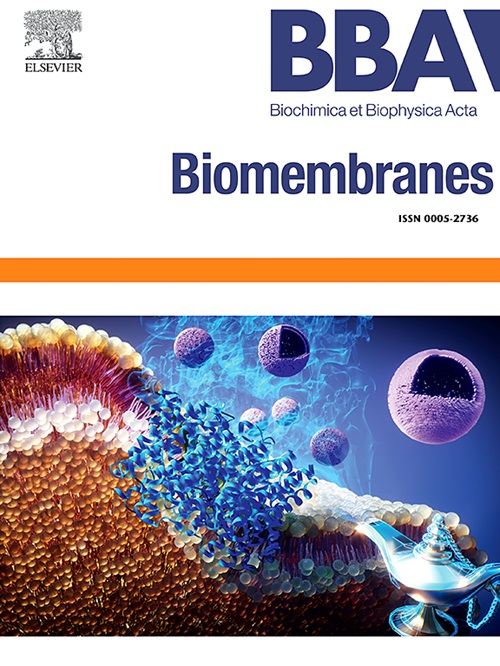Steady dimer formation by the S31N mutant of influenza A virus M2 protein in living cell membranes
IF 2.5
3区 生物学
Q3 BIOCHEMISTRY & MOLECULAR BIOLOGY
引用次数: 0
Abstract
The integral matrix protein M2 of the influenza A virus (H3N2) has been proposed to form a proton-selective channel, and is a target of the antiviral drug amantadine hydrochloride (Am). A significant increase in the number of drug-resistant strains containing the predominant M2-S31N mutant have emerged. We have previously developed a stoichiometric analysis of oligomeric states of membrane proteins by utilizing a coiled-coil method and fluorescence resonance energy transfer phenomenon and demonstrated that full-length M2-WT proteins in living cells formed a dimer at neutral pH, which was converted to a tetramer at acidic pH. In the present study, we revealed that the M2-S31N mutant stably formed dimers independent of pH, which was stabilized by multiple interactions between the protomers. We also found that neither the channel activity nor the oligomeric state of S31N were affected by Am. Molecular dynamics (MD) simulations revealed that Asn31 and Ile35 are involved in proton conduction via steady interactions with cholesterol. These results indicate that Am resistance could be attributed to a change in the arrangement of helices interfering with drug binding.

甲型流感病毒M2蛋白S31N突变体在活细胞膜上稳定二聚体的形成
甲型流感病毒(H3N2)的积分基质蛋白M2已被提出形成质子选择通道,并且是抗病毒药物盐酸金刚烷胺(Am)的靶点。含有主要M2-S31N突变体的耐药菌株数量显著增加。我们之前利用螺旋法和荧光共振能量转移现象对膜蛋白的寡聚物状态进行了化学计量分析,并证明了活细胞中全长M2-WT蛋白在中性pH下形成二聚体,在酸性pH下转化为四聚体。在本研究中,我们发现M2-S31N突变体稳定形成二聚体,不依赖于pH,并通过原聚体之间的多重相互作用来稳定。我们还发现,Am对S31N的通道活性和低聚态都没有影响。分子动力学(MD)模拟显示Asn31和Ile35通过与胆固醇的稳定相互作用参与质子传导。这些结果表明,Am耐药可能归因于干扰药物结合的螺旋排列的变化。
本文章由计算机程序翻译,如有差异,请以英文原文为准。
求助全文
约1分钟内获得全文
求助全文
来源期刊

Biochimica et biophysica acta. Biomembranes
生物-生化与分子生物学
CiteScore
8.20
自引率
5.90%
发文量
175
审稿时长
2.3 months
期刊介绍:
BBA Biomembranes has its main focus on membrane structure, function and biomolecular organization, membrane proteins, receptors, channels and anchors, fluidity and composition, model membranes and liposomes, membrane surface studies and ligand interactions, transport studies, and membrane dynamics.
 求助内容:
求助内容: 应助结果提醒方式:
应助结果提醒方式:


